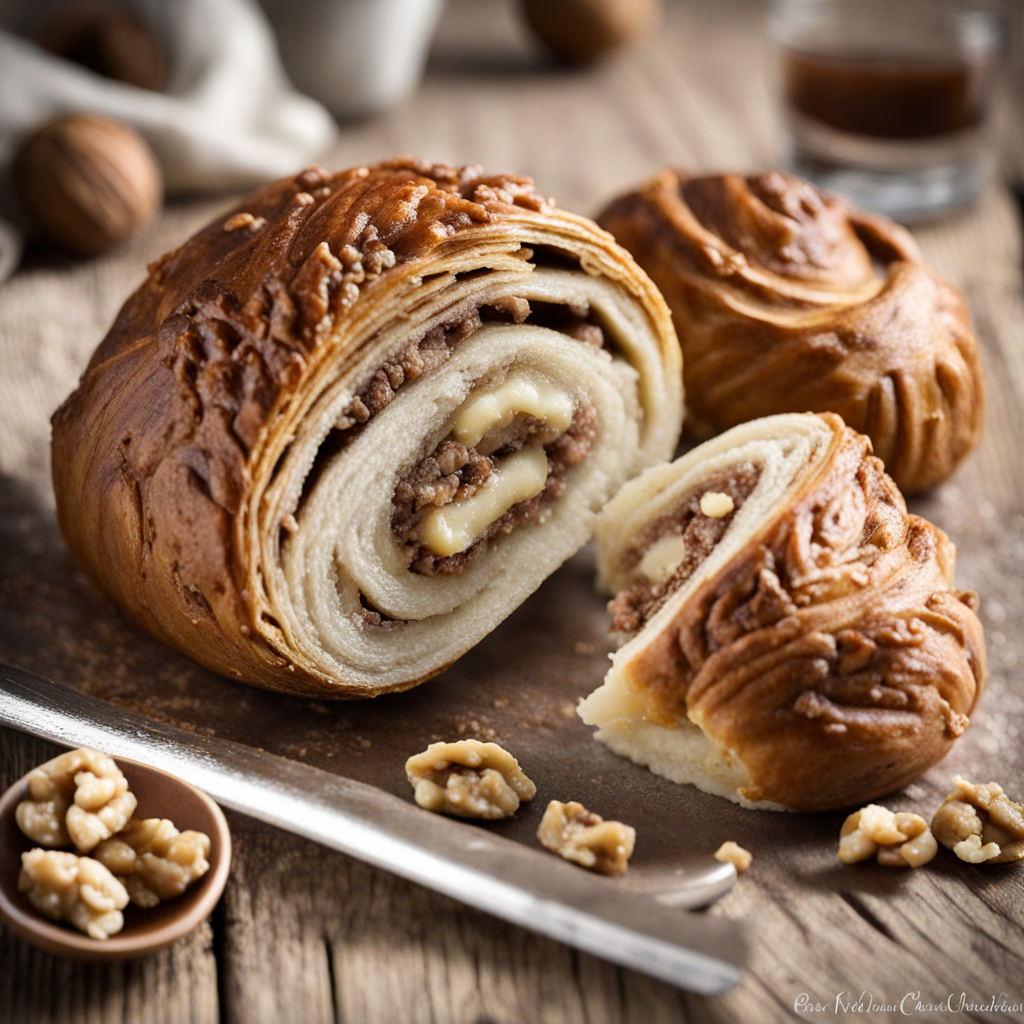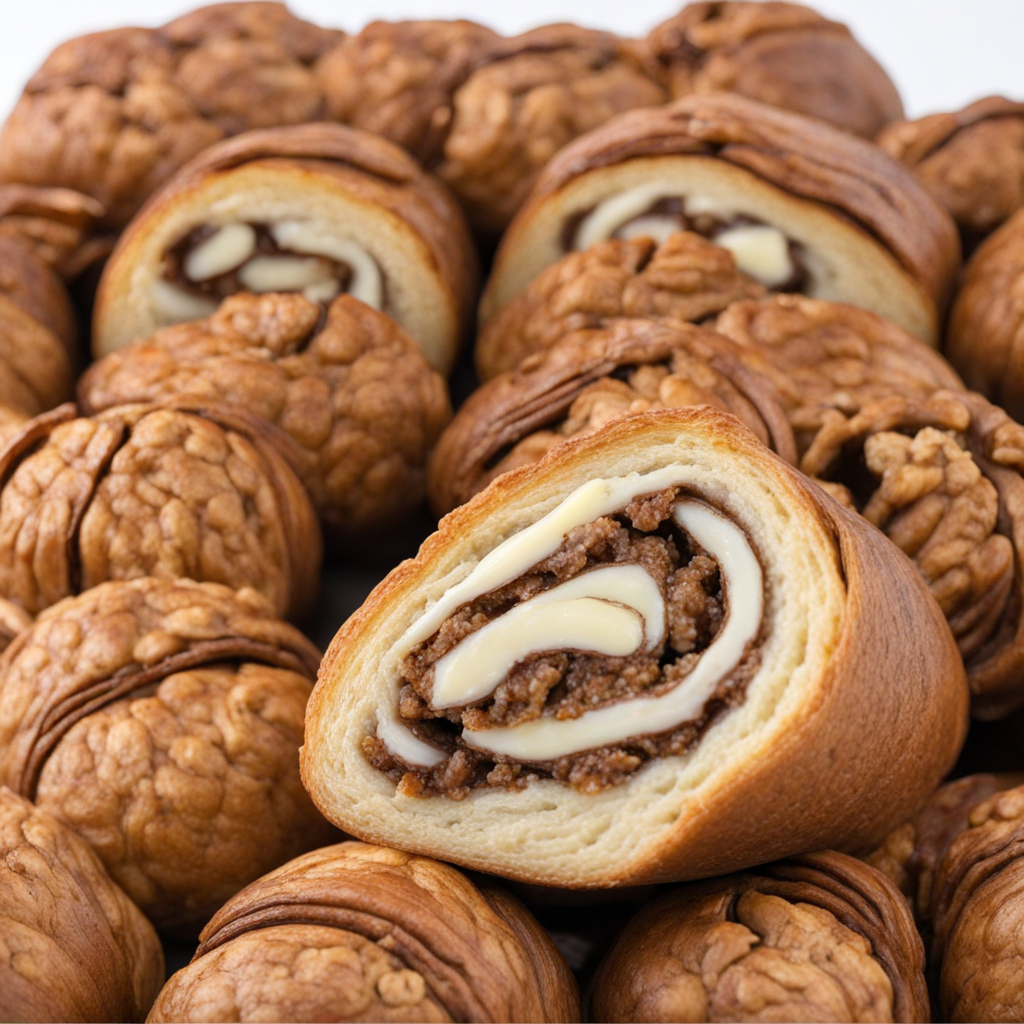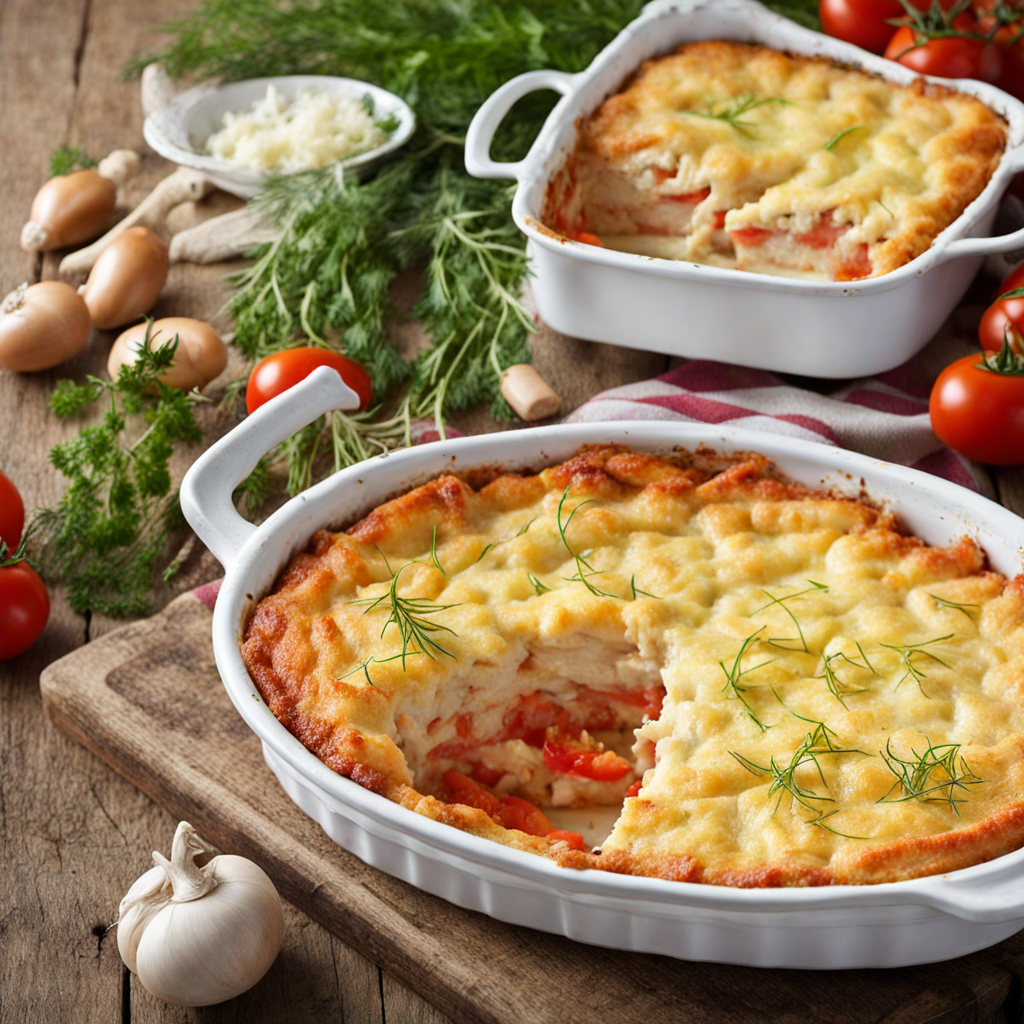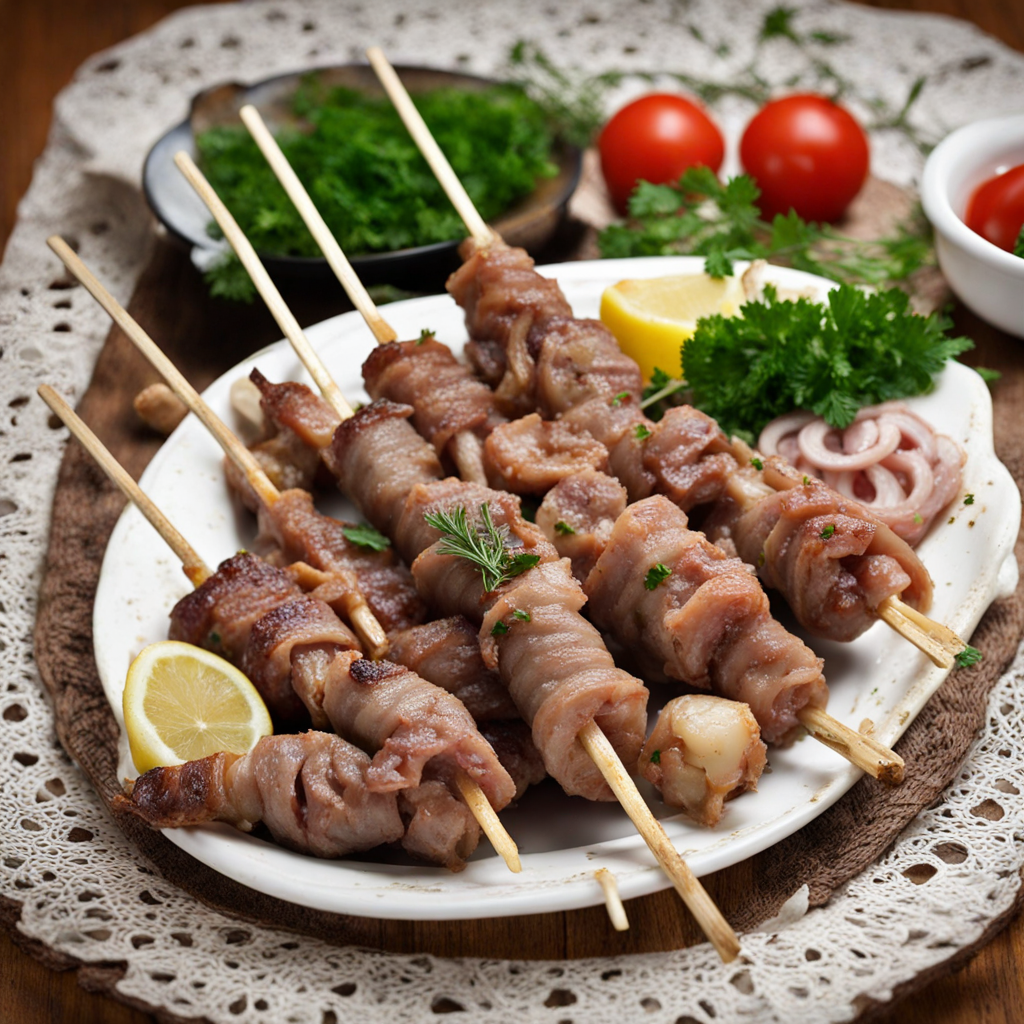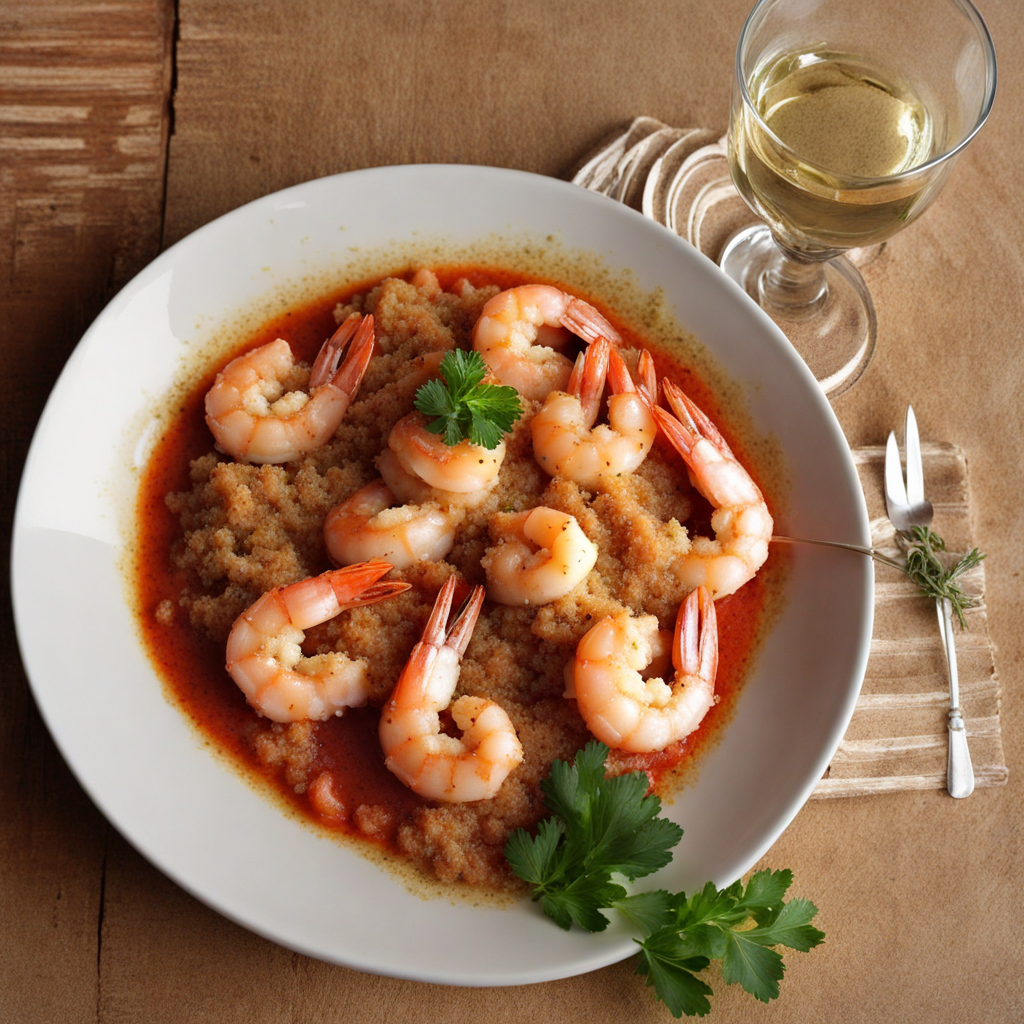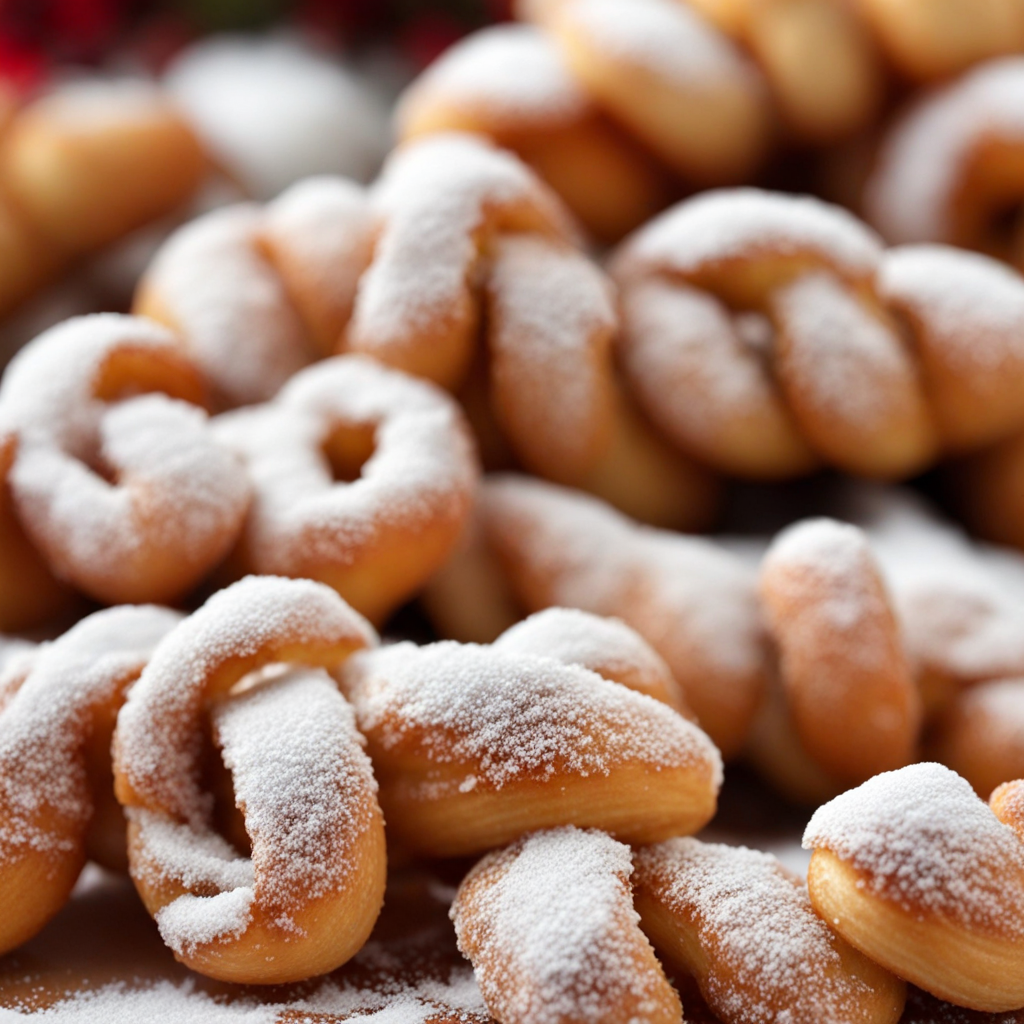Orehnjača
Orehnjača is a traditional Croatian pastry that showcases the rich culinary heritage of the region, particularly popular in the central and northern parts of the country. This delightful dessert is essentially a walnut roll, where a soft, slightly sweet dough is rolled out and generously filled with a finely ground walnut mixture, sugar, and often a hint of vanilla or citrus zest. The combination of the tender dough and the nutty filling creates a harmonious balance of flavors, making each bite a delightful experience that melts in your mouth. As you take your first bite of Orehnjača, the aroma of toasted walnuts and warm spices envelops your senses, while the texture offers a satisfying contrast between the fluffy, airy dough and the rich, slightly sticky filling. The pastry is typically baked until golden brown, resulting in a beautifully caramelized exterior that adds a touch of crunch, accentuating the softness of the interior. It’s often enjoyed during festive occasions, family gatherings, or simply as a comforting treat with a cup of coffee or tea, making it a beloved item in Croatian homes. Orehnjača is not just a dessert; it carries with it stories of tradition and family. Many Croatian households have their own recipes passed down through generations, each with unique variations that may include ingredients like rum, chocolate, or even poppy seeds. The preparation is often a communal activity, where friends and family come together to create this cherished pastry, reinforcing bonds and celebrating culture. For anyone looking to explore new flavors, tasting Orehnjača is an invitation to enjoy a piece of Croatian history, wrapped in layers of warmth and nostalgia.
How It Became This Dish
Orehnjača: A Sweet Slice of Croatian Heritage Nestled within the rich tapestry of Croatian culinary tradition is a delightfully sweet pastry known as *Orehnjača*. This traditional walnut roll is not just a food item but a symbol of cultural heritage, family gatherings, and festive celebrations. To truly appreciate *Orehnjača*, one must delve into its origins, cultural significance, and the evolution it has undergone over the centuries. Origins of Orehnjača The name *Orehnjača* derives from the Croatian word "oreh," meaning walnut. Its roots can be traced back to the regions of Central and Eastern Europe, where walnut trees thrive and the nut is a staple ingredient in many traditional recipes. The pastry itself is believed to have originated from the broader family of yeast-leavened doughs that are prevalent across the Balkans and beyond, often filled with nuts, poppy seeds, or fruits. Historically, *Orehnjača* is linked to the culinary practices of the Slavic peoples, particularly among those in the territories of modern-day Croatia, Serbia, and Slovenia. The recipe reflects the agricultural lifestyle of these regions, where walnuts were abundant and often harvested in the fall. The technique of making sweet yeast dough has roots that date back to the Middle Ages, influenced by various cultures and culinary practices as trade and migration shaped the region. Cultural Significance *Orehnjača* holds a special place in Croatian culture, particularly during festive occasions and family gatherings. It is commonly associated with Christmas and Easter celebrations, where it is often prepared alongside other traditional pastries. The act of baking *Orehnjača* is not merely about creating a delicious treat; it is a ritual that brings families together, reinforcing bonds through shared labor and the joy of cooking. In many Croatian households, the preparation of *Orehnjača* is a time-honored tradition passed down through generations. Grandmothers often teach their grandchildren the secrets of the dough, the perfect balance of filling, and the importance of patience in allowing the dough to rise. This process embodies the values of family, continuity, and the preservation of cultural identity. Beyond its familial significance, *Orehnjača* also plays a role in community events and gatherings. It is often featured at weddings, birthdays, and other celebrations, symbolizing prosperity and abundance. The sharing of this pastry is a gesture of goodwill, bringing people together in a spirit of generosity and joy. The Development Over Time The evolution of *Orehnjača* reflects the broader changes in Croatian society and culture, particularly in the 19th and 20th centuries. As cities grew and lifestyles changed, the ways in which traditional foods were prepared and consumed also transformed. Industrialization brought about new baking techniques and ingredients, making it easier for people to create pastries at home. The introduction of commercial yeast, for instance, simplified the leavening process, allowing for lighter and fluffier doughs. During the Yugoslav era, the popularity of *Orehnjača* spread beyond the boundaries of Croatia. It was embraced by various ethnic groups, each adding their unique twist to the recipe. This cross-cultural exchange resulted in a variety of regional adaptations, with some incorporating different nuts, such as hazelnuts or almonds, and experimenting with fillings that included chocolate or even fruit preserves. In contemporary times, *Orehnjača* has experienced a resurgence in interest as a part of Croatia’s national identity. As the country navigated its independence in the early 1990s, there was a renewed emphasis on traditional foods as a way to celebrate and preserve cultural heritage. Culinary festivals, cooking classes, and food blogs have contributed to a renaissance of interest in traditional Croatian recipes, with *Orehnjača* taking center stage. Chefs today are not only preserving the traditional methods of making *Orehnjača* but are also innovating. Some have begun to experiment with gluten-free alternatives or incorporate modern flavors, such as spices like cardamom or citrus zests, expanding the traditional recipe’s appeal to a broader audience. This melding of old and new has ensured that *Orehnjača* remains relevant, appealing to both younger generations and those who cherish the nostalgia of their childhoods. Ingredients and Preparation The classic *Orehnjača* consists of a rich, yeast-based dough typically made from flour, sugar, eggs, milk, and butter. The filling is the star of the show, featuring finely ground walnuts mixed with sugar, milk, and sometimes a splash of rum or vanilla extract for added flavor. The dough is rolled out, generously spread with the walnut mixture, and then carefully rolled into a log shape before being baked to golden perfection. The preparation of *Orehnjača* is an art form that requires skill and attention to detail. The dough must be kneaded until it is smooth and elastic, then allowed to rise until it doubles in size. This patience is rewarded with a beautifully airy and soft pastry that envelops the rich filling. Once baked, the *Orehnjača* is often brushed with melted butter and, in some families, dusted with powdered sugar before serving. Conclusion *Orehnjača* is more than just a delicious pastry; it is a testament to the resilience and richness of Croatian culture. Its roots stretch deep into the history of the region, embodying the agricultural practices, family values, and communal spirit of the Croatian people. As generations continue to pass down the craft of making *Orehnjača*, it remains a cherished symbol of identity, celebration, and the joys of shared culinary experiences. In every bite, one can taste the history, tradition, and love that have been baked into this iconic treat. Whether enjoyed during the festive season or as a comforting reminder of home, *Orehnjača* is indeed a sweet slice of Croatian heritage.
You may like
Discover local flavors from Croatia


